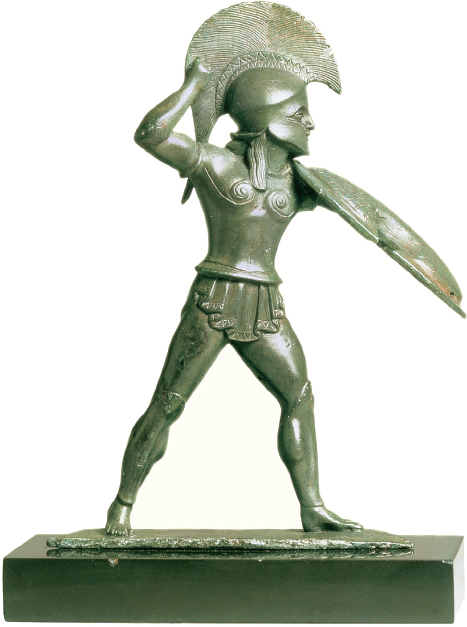Understanding World Societies:
Printed Page 120
> What was the role of the polis in Greek society?

Spartan Hoplite
This bronze figurine portrays an armed foot soldier about to strike an enemy. His massive helmet with its full crest gives his head nearly complete protection, while a metal corselet covers his chest and back, and greaves (similar to today’s shin guards) protect his shins. In his right hand he carries a thrusting spear (now broken off), and in his left a large round shield. (bpk, Berlin/Antikensammlung, Staaliche Museen, Berlin, Germany/Photo: Johannes Laurentius/Art Resource, NY)
This bronze figurine portrays an armed foot soldier about to strike an enemy. His massive helmet with its full crest gives his head nearly complete protection, while a metal corselet covers his chest and back, and greaves (similar to today’s shin guards) protect his shins. In his right hand he carries a thrusting spear (now broken off), and in his left a large round shield. (bpk, Berlin/Antikensammlung, Staaliche Museen, Berlin, Germany/Photo: Johannes Laurentius/Art Resource, NY)
HHomer lived in the era after the Dark Age, which later historians have termed the Archaic age (800–